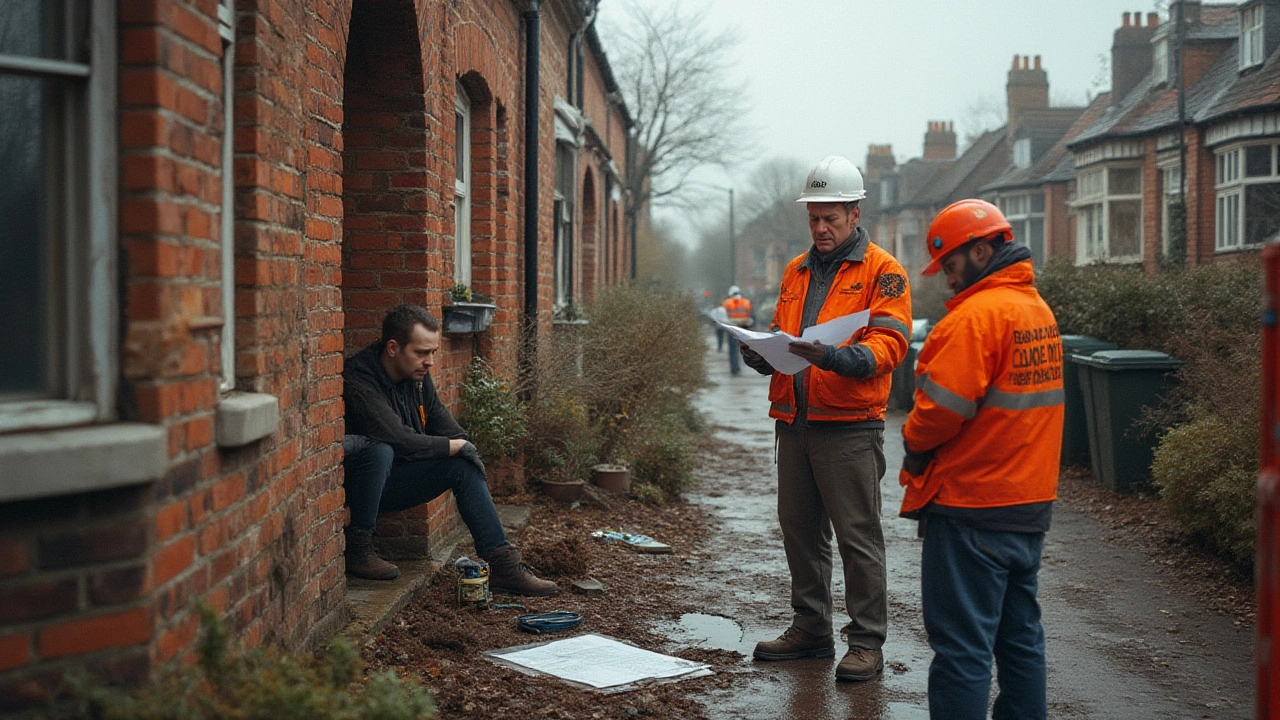Foundation Underpinning – When and How to Secure Your Home
If you’ve ever seen cracks in walls, doors that stick, or uneven floors, you’ve probably wondered if the foundation is the culprit. The truth is, many of those problems come from a weak or shifting base. That’s where foundation underpinning steps in. It’s a set of techniques that strengthen the soil and support under a building, giving you a solid platform to live on.
Most homeowners don’t need to think about underpinning until something goes wrong. But knowing the warning signs can save you money and stress. Look for new cracks that widen over time, sloping floors, doors that won’t close properly, or windows that sit unevenly. If you notice any of these, get a structural survey quickly. A professional will check whether the soil has settled, if water is causing movement, or if old footings are crumbling.
Why Underpinning Is Needed
Ground conditions change. Soil can shrink when it dries out, swell when it gets wet, or shift if nearby construction disturbs it. In the UK, clay soils are especially notorious for expanding and contracting with the weather. When the ground moves, the foundation follows, and the building starts to feel the stress.
Underpinning stops that chain reaction. By extending footings deeper into stable ground, you transfer the building’s load to a firmer layer. The result is less movement, fewer cracks, and a longer lifespan for the property. It also protects your investment, making it easier to sell a house that’s structurally sound.
Common Underpinning Methods
There are three main methods you’ll hear about:
Mass concrete underpinning – This is the classic approach. Small sections of the foundation are excavated, then filled with concrete that reaches deeper, load‑bearing soil. It’s cheap and works well for low‑rise homes.
Beam and mini‑pile underpinning – Here, steel or reinforced concrete beams are installed horizontally, and mini‑piles are driven vertically into strong soil layers. The beams tie the existing footings to the piles, creating a sturdy network. This method handles bigger loads and is good for larger structures.
Jet grouting – A high‑pressure mix of cement, water, and additives is pumped into the ground, forming a solid column. It’s ideal where space is tight, or where you need to strengthen soft soil without digging large trenches.
Choosing the right method depends on the soil type, the size of your building, and the budget. A qualified structural engineer will evaluate these factors and recommend the most effective solution.
Cost is a common worry. Underpinning can range from £1,500 for a small job to over £10,000 for extensive work. While it sounds pricey, compare it to the cost of repeated repairs or a drop in property value. Most homeowners find the investment worthwhile for peace of mind and a safer home.
Once the work is done, keep an eye on the building for a few months. Minor settlement is normal, but any new cracks or shifting doors should be checked right away. Regular maintenance – like ensuring proper drainage around the house and keeping gutters clear – helps the underpinning perform its job for years.
In short, foundation underpinning is a practical solution when the ground under your house isn’t stable. Spotting early signs, getting a professional assessment, and choosing the right method can protect your home’s structure and your wallet. If you’re unsure whether your property needs underpinning, start with a simple visual check and a quick call to a trusted engineer. The sooner you act, the easier it is to keep your home on solid ground.
Most Expensive Foundation Repairs: Your Guide to Piering, Underpinning & Replacement
- Gavin Whitaker
- |
- |
- 0
Curious which foundation repair methods will hit your wallet hardest? Get the real story on the most expensive options, what drives the price, and how to prepare.
View more